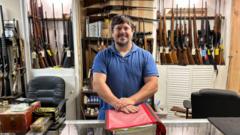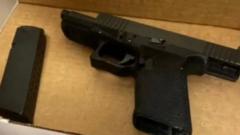Elias Andersson, a resident of the Aland Islands, merges local hunting traditions with modern innovation by creating a 3D-printed rifle called the Printax 001. His efforts highlight the growing trend of 3D-printed firearms, fueled by American gun culture, and their potential role in international conflicts.
The Rise of 3D-Printed Firearms in Isolated Regions: A Case Study from the Aland Islands

The Rise of 3D-Printed Firearms in Isolated Regions: A Case Study from the Aland Islands
The Aland Islands illustrate the globalization of 3D-printed firearms technology and its implications on local traditions and global conflicts.
In the remote Aland Islands, an autonomous region of Finland, traditional hunting practices have intertwined with the innovative world of 3D printing, evidenced by the efforts of Elias Andersson, a 28-year-old local. Situated in the Baltic Sea, these islands have a long history of hunting using wood-crafted rifles passed down through generations, primarily for seal and varmint hunting. However, with the advent of modern technology, Andersson sought to blend these traditions with contemporary firearm design, culminating in the creation of his 3D-printed rifle known as the Printax 001.
Inspired by American gun culture he discovered through YouTube channels and forums, Andersson embarked on this project during the Covid pandemic, capturing a more aggressive narrative of firearm ownership compared to his local atmosphere. After obtaining necessary permissions from Finnish authorities, he took years to refine the Printax, which resembles a hybrid of an AR-15 and a sci-fi blaster, with its name deriving from the local internet domain .AX that symbolizes the Aland Islands.
The emergence of Andersson's rifle symbolizes a significant trend where 3D-printed firearms are transitioning from a niche hobby to a global phenomenon. Once limited to a small community, these weapons have caught the attention of rebels in Myanmar and criminals in various regions, showcasing their availability in areas with restrictive firearm access. In light of the ongoing Russia-Ukraine conflict, Andersson's project gained a new dimension as he engaged with contacts in Ukraine, exploring the potential for supplying the Printax to those affected by the war, thereby linking local craftsmanship to international conflict dynamics.
Andersson's journey underscores a broader narrative about how advancements in 3D printing are reshaping the traditional gun culture and influencing global arms distribution, raising questions about regulation, safety, and the future of firearm ownership in diverse locales.












